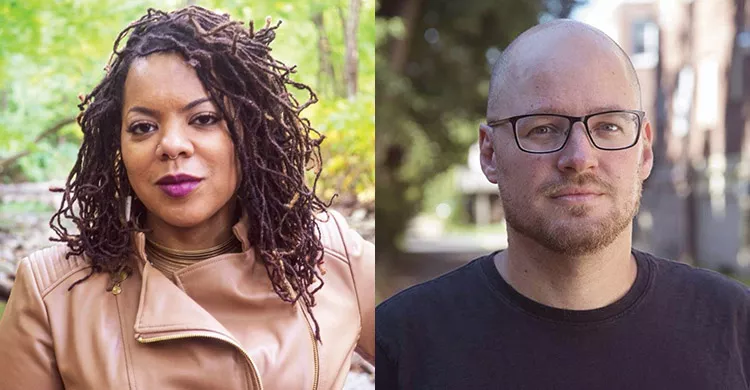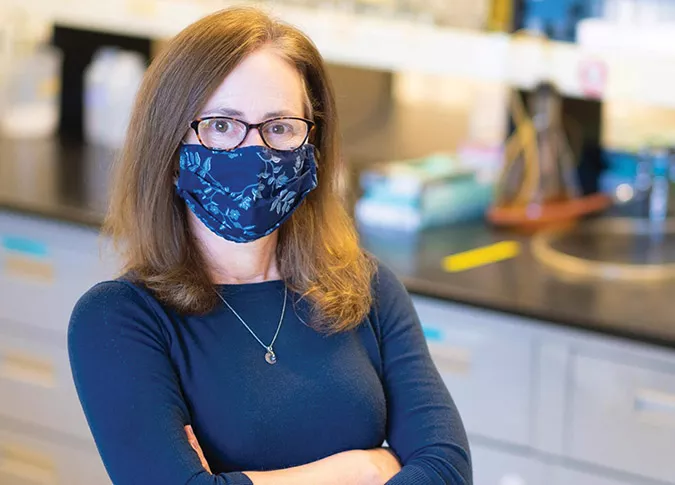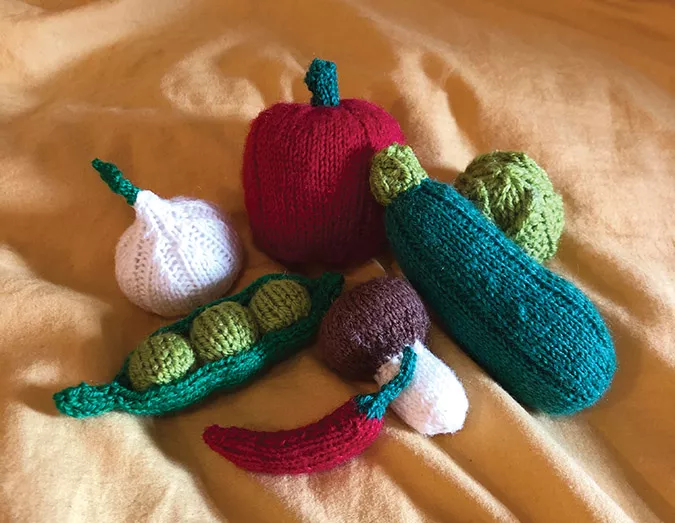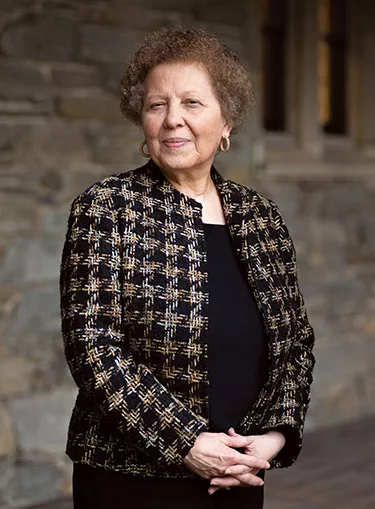For Starters: Winter 2021
Literary Lions. A is for Information. Diaspora Studies.

1. Big Data
Data are an omnipresent aspect of modern life, and how they are used and interpreted raises ethical and social issues for individuals and society alike. Bryn Mawr’s new interdisciplinary data science program, which offers a minor in data science as well as programming for the larger College community, seeks to increase knowledge of data analytics, computational approaches, data-driven decision-making, data structures and management, and the social and ethical implications of data. The program is also working closely with the Career and Civic Engagement Center to provide students with opportunities to pursue related internships and jobs.
2. Literary Lions
Dee Matthews, assistant professor of creative writing, is one of 10 Philadelphia-area artists to receive a 2020 Pew Center for Arts & Heritage Fellowship. Matthews’s work experiments with poetic forms to consider how language can shape perceptions of the self, shared histories, and assumed notions of Blackness. Daniel Torday’s “Neighbors” appears in the 2020 edition of Best American Short Stories. The director of BMC’s creative writing program and two-time winner of the National Jewish Book Award for fiction, he has published two novels. A film adaptation of his second, Boomer1, is currently in development.
3. Solar Power
In December, when Haverford Township’s Board of Commissioners earmarked $1 million for a solar project, a handful of Mathematics Professor Victor Donnay’s students could take some credit. It all began when COVID-19 prevented the Climate Change 360° from traveling to Freiburg, Germany. Instead, students turned to webinars to engage with the people there. “We learned that a lot (more than 50 percent) of renewable energy projects in Germany have been funded by citizen co-ops,” says Donnay. “That is such a different approach than in the U.S., and we were intrigued.” For their final project, Johnluca Fenton (HC ’21) and Samantha Van Cott ’20 joined up with Jeremy Akin (HC ’20) and Sophia McConnell ’20 (who were in Donnay’s Praxis Independent Study seminar on sustainability) to research the solar potential of the Township buildings and possible financial arrangements. The presentation they made to the Township’s environmental advisory committee last spring was so well received that Donnay decided to continue the project with Fenton and Liwei Yang ’21. With support from Bryn Mawr’s Summer Science Research Program, Fenton and Yang made a compelling presentation to the commissioners that included an analysis of the cost, potential savings, and environmental benefits of installing solar panels on several Township buildings.
4. A Is for Information
When colleges across the country began planning their fall semesters, one thing was clear: transparency would be key for students, faculty, and staff as they make decisions about safety. We Rate COVID Dashboards, a site co-founded by researchers from Yale and Harvard universities, has given Bryn Mawr an A for its dashboard. The ratings consider the frequency of updating, information reported (the number of positive cases, total number and frequency of tests, and numbers in quarantine), breakdown for students and faculty/staff, and local trends. Visit brynmawr.edu/coronavirus/covid-19-dashboard.
5. The Smell Test
When Kate Petrova ’20 saw a tweet about customers leaving negative online reviews about scented candles, the psychology major with an interest in data visualization dug a little deeper. Petrova did some tweeting of her own, including a chart that showed that since early 2020, customer satisfaction with scented candles dropped at a much greater rate than the satisfaction with unscented candles. Another showed that the proportion of reviews mentioning lack of scent grew from less than two percent in January to near six percent in November. Her tweet garnered more than 30,000 likes and 17,000 retweets and caught the attention of the Washington Post and Newsweek. Although happy to highlight the power of data visualization, Petrova warns that “just because an explanation seems plausible does not mean that it is correct, which is why additional work will need to be done if we really want to know if there is an association between COVID-19 cases and negative reviews of scented products.”
6. Hooked on a Feeling
“Feelings often mess up our ability to make logical calculations about risk. ... When more people do things like meet with family members who they haven’t been isolating with and it works okay, it convinces people that there must be some safety to it.” —Marc Schulz, professor of psychology, quoted in Deseret News
7. It’s Genetic
The National Science Foundation has awarded biology professor Tamara Davis a nearly $400,000 grant to extend research on genomic imprinting. The majority of genes in mammals are expressed from copies inherited from both parents, but a small number—called imprinted genes— are expressed only from one of the two copies. Davis’s research focuses on DNA methylation, which plays a leading role in directing differential expression of the mother’s versus the father’s copy of imprinted genes. This project will examine the mechanisms responsible for maintenance of DNA methylation at imprinted genes to better understand how distribution of this DNA modification on the two parental copies results in their different expression patterns. “It is important to understand how methylation is acquired and maintained because normal patterns of mammalian growth and development are perturbed if the expression of imprinted genes is dysregulated,” Davis explains. The grant provides paid opportunities for students to conduct and evaluate research under Davis’s supervision and mentorship. In addition, there is specific funding to support students in Bryn Mawr’s STEM Posse program, which fosters the education of a diverse cohort of students from urban public high schools.
8. Crafty
Mini-vegetables by Jordan Beck ’22.
English House professors noticed that students, in and out of class, are fighting stress with arts-and-craftiness. Visit brynmawr.edu/english/covid-crafts.
9. Pathways to Healthcare
This fall, about 30 high school students met on Zoom to participate in the first Underrepresented Youth in Healthcare conference. Part of an ongoing initiative called Health Pathways for Latinx, African American, and Native Students (HPLANS), the event was the brainchild of Toniya Brown, a student in Bryn Mawr’s postbaccalaureate premedical program. “Having a program like this in high school would ... have started me on the pathway I’m currently on earlier,” says Brown, who double-majored in psychology and global health at Duke University. The two-day conference kicked off with a day devoted to health inequalities and health issues prominent in Black, Native American, and Latinx communities. The second day focused on connecting the students with graduate and undergraduate students pursuing careers in the field. To organize HPLANS, Brown got an assist from Karen Guo ’22, Genesis Perez-Melara ’19, and several other graduate and undergraduate students from Bryn Mawr and Duke. Biology major Perez-Melara, a first-generation Latina student, jumped at the opportunity to get involved. “Mentoring minority students in STEM means so much to me because it was programs and conferences like these that helped me get to where I am today,” she says. Says Brown, “Genesis volunteered to serve as the Latinx/Hispanic health disparities presenter, and Karen volunteered to perform research and communicate with schools. I can’t thank them enough for the incredible work they did to make this conference a reality.” Brown plans to make the conference an annual event that will evolve to include other topics and speakers. “The long-term goal would be to get as many underrepresented students as possible interested in healthcare as early as possible,” she says.
10. Diaspora Studies
Sociology Professor Mary Osirim is participating in an interdisciplinary research seminar focusing on the African Diaspora that is bringing together scholars from a range of universities. Final projects—academic essays, visual images/photographs, and digital humanities projects—will be presented at several participating institutions and at public venues, among them the National Museum of African Art and the National Museum of African American History and Culture. Led by African American Studies Professor Sharon Harley at the University of Maryland, the project is funded by the Andrew W. Mellon Foundation.
Published on: 03/18/2021





